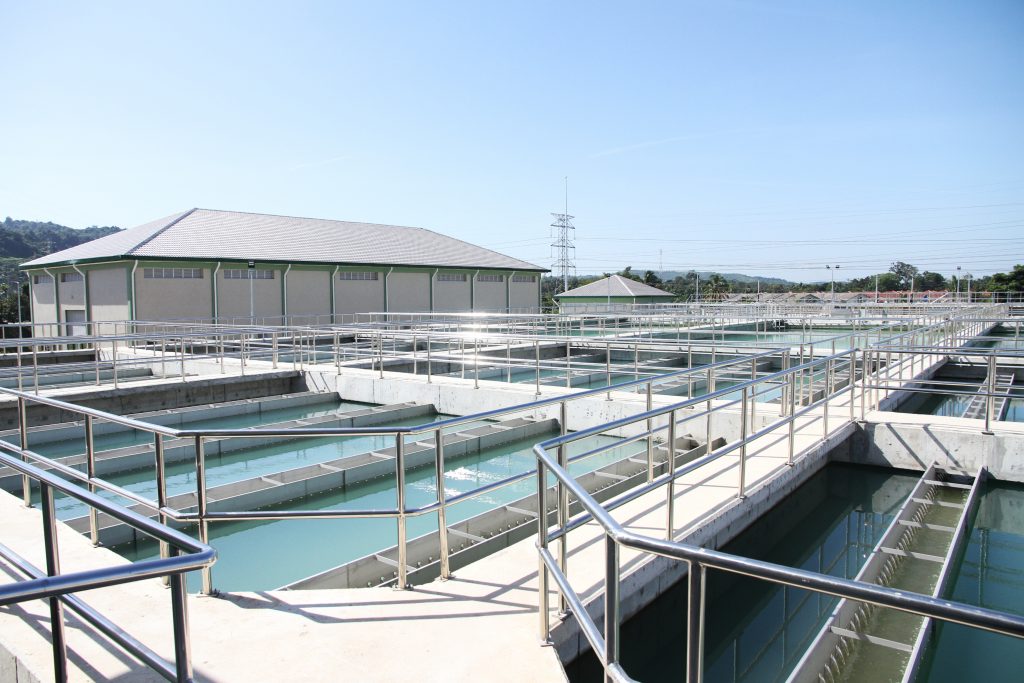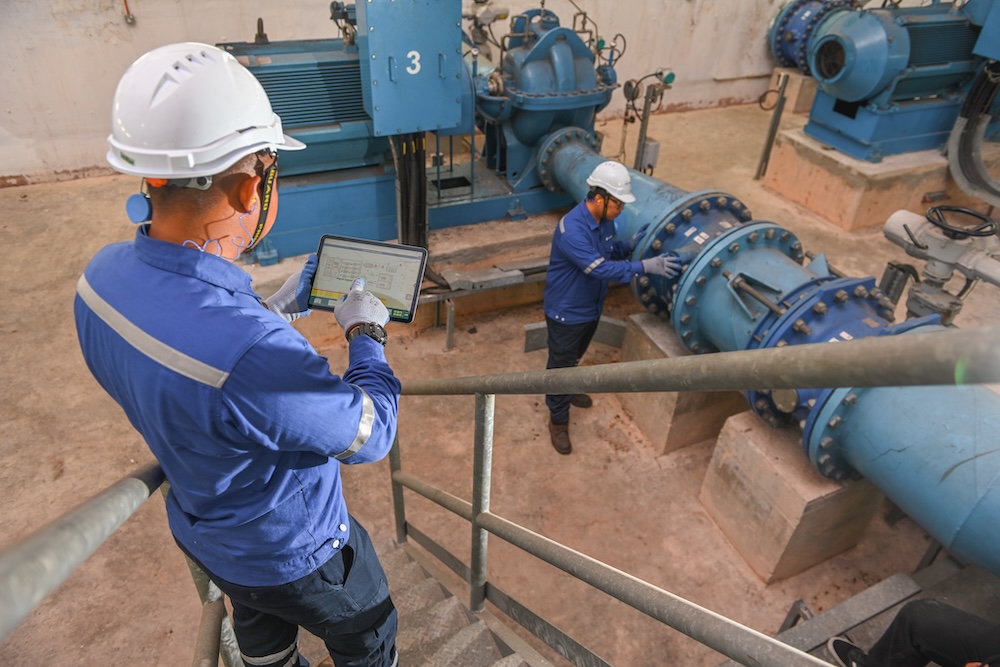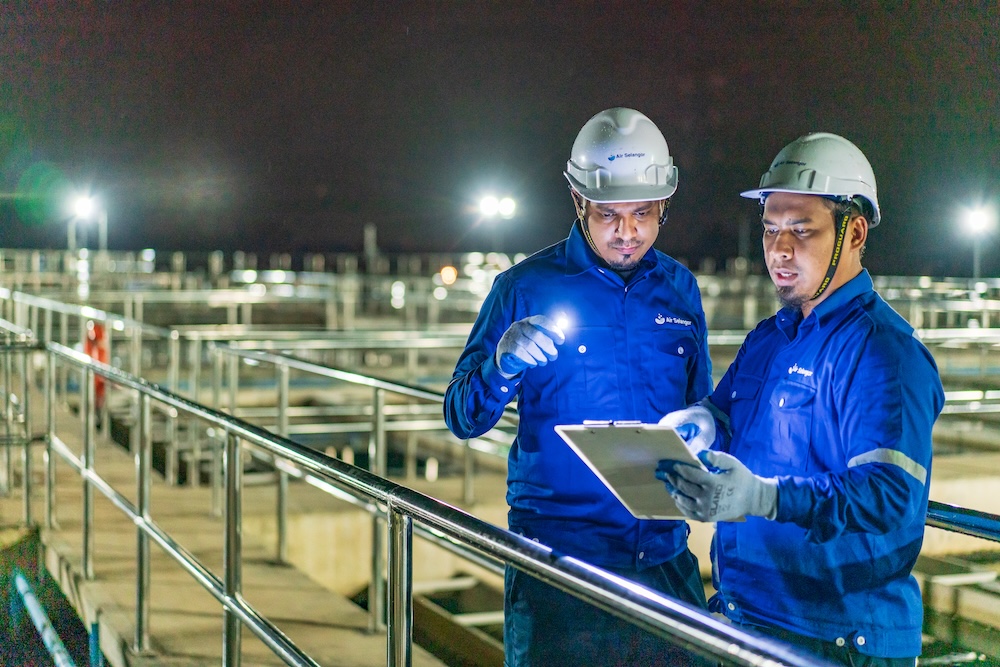Flowing Forward with the Digital Twin Advantage
By Adam Saffian Ghazali, Chief Executive Officer, Air Selangor & Shanmugavel Subramaniam, Global Digital Water Leader, Schneider Electric
When we turn on the tap to brush our teeth, take a shower, or wash our clothes, we rarely think about the intricate system that makes it all possible. Imagine a tree: we admire its leaves and branches, but the roots, hidden beneath the soil, are the true lifeline. Similarly, the complex water management system that ensures clean water flows seamlessly into our homes is often unseen but crucial.

From vast reservoirs and intricate pipelines to advanced treatment plants and sophisticated monitoring systems, the journey of water is a marvel of engineering and coordination. Just as the roots support the tree, these unseen elements sustain our daily lives, making water management crucial. The complexity involves not just physical infrastructure but also advanced digital systems that monitor and control water quality, flow, and distribution.
Beneath the Surface: Malaysia’s Water Journey
Malaysia’s water management system has made significant strides over the years, achieving an impressive 94.9% access to treated water. The country employs Integrated Water Resources Management involving the management of 189 river basins with an aim to maximise water management in an equitable manner without compromising the sustainability of vital ecosystems. Advanced digital systems have also been implemented, such as Air Selangor’s intelligent command centre and smart meter technology, enhancing monitoring and control of water quality and distribution over the years.
Nevertheless, as Malaysia’s water management system advances, new challenges have emerged that require constant vigilance and adaptation. Climate change, unpredictable weather patterns, and rising temperatures are increasingly impacting water resources. If left unaddressed, these factors may lead to more frequent and severe droughts, floods and water scarcity.
Consequently, water management professionals must continuously reassess strategies to ensure water resilience. Advanced innovations are pivotal in tracking these changes and facilitating swift adaptations to evolving conditions.


Reimagining Water Management with a Circular Approach
Fortunately, advanced digital control and analytical technologies are emerging. By leveraging data from sensors attached to physical components and supervisory control software (SCADA) to monitor sensor inputs, operators can obtain a holistic view of pressure and flow deltas and losses across the entire system.
Digital twin, a dynamic digital representation of real-world entities and their behaviours, takes this a step further. Utility managers can generate a contextualised view of both above-ground and below-ground assets by leveraging the modeling capabilities of advanced digital twin technologies. These virtual models of water systems enable real-time monitoring and optimisation. The technology helps identify inefficiencies and predict maintenance needs, improving the overall performance of water management systems.
This holistic perspective allows managers to optimise resource use, reduce waste and enhance sustainability. With the ability to simulate different scenarios and predict outcomes, digital twin support proactive decision-making, ensuring that water resources are managed efficiently and responsibly throughout their lifecycle.
Air Selangor is leading the way in innovative water management with the Semenyih 2 Water Treatment Plant (WTP). Operational since 2022, Semenyih 2 is Malaysia’s first fully automated WTP and has recently been upgraded with Schneider Electric’s Asset Digital Twin solutions powered by AVEVATM Asset Information Management and AVEVATM Predictive Analytics. This advanced technology enables autonomous operation across standard, startup, and shutdown processes. The plant delivers an average output of 100 million litres per day (MLD) and is projected to achieve up to a 20% improvement in productivity and improve water service quality for 9.62 million consumers. By setting a new benchmark for efficiency and innovation, Air Selangor demonstrates how digital twin technology can offer unprecedented precision and operational excellence.

How Digital Twin is Changing the Game
Imagine a world where water management is not just reactive but proactive, where every drop is accounted for, and potential issues are addressed before they become problems. This is the promise of digital twin technology. Here are four key benefits that highlight its transformative impact:
- Instant Insight at Your Fingertips
Digital twin gathers continuous data from physical entities, enabling real-time monitoring and updates. To illustrate, the new asset digital twin model at Semenyih 2 WTP integrates diverse data from using 3-D BIM, centralised asset information management with real-time monitoring and predictive analytics and updates into 3-D graphical interfaces that empower operators with insightful and faster decision-making support. This likewise establishes the foundation for transforming people & processes to decrease chemical dosing and energy usage. This continuous stream of data ensures that any anomalies are detected and addressed promptly.
- Test the Future Without the Risk
One of the most powerful features of the digital twin is its ability to simulate various conditions and outcomes without risking damage to the actual system. For example, through digital twin, Air Selangor is ahead of the game in detecting anomalies and forecasting the impact of planned and unplanned events such as drought conditions or increased demand before they happen and efficiently implementing mitigation strategies.
- See the Big Picture in Real Time
Digital twin use graphical interfaces to help users visualise data and performance metrics intuitively. Imagine a dashboard that displays real-time information about water levels, pressure, and flow rates in a clear and accessible format. With the AVEVATM technology for instance, real-time operational data integration with structural and engineering allows gathering continuous data from the physical entity, enabling real-time monitoring and updates into 3-D graphical interfaces that help users intuitively visualise data and performance metrics.
- Stay Ahead with Predictive Analytics
By analysing trends and patterns, digital twin can forecast potential issues, allowing for proactive maintenance and decision-making. For example, if the data indicates a gradual decline in pump efficiency, the system can predict when maintenance will be needed before a failure occurs. When this is implemented in the Semenyih 2 WTP, this foresight enables Air Selangor to schedule repairs and replacements in advance, minimising downtime and ensuring continuous service. As a result, Air Selangor can predict events up to several months in advance.

A New Era of Water Management
The integration of digital twin technology at the Semenyih 2 WTP represents a transformative leap in water management. By creating dynamic digital replicas of physical assets and systems, Air Selangor can achieve unprecedented precision in monitoring and optimising water distribution and quality. This technology enables real-time insights, predictive maintenance and proactive decision-making, ensuring that potential issues are addressed before they escalate. The challenges facing the water and wastewater industry are vast, but the opportunities for innovation are even more significant. With the advent of digital twin technology, we have a valuable tool to navigate the complexities of our water management journey, ultimately leading to a more resilient and reliable water management system.

